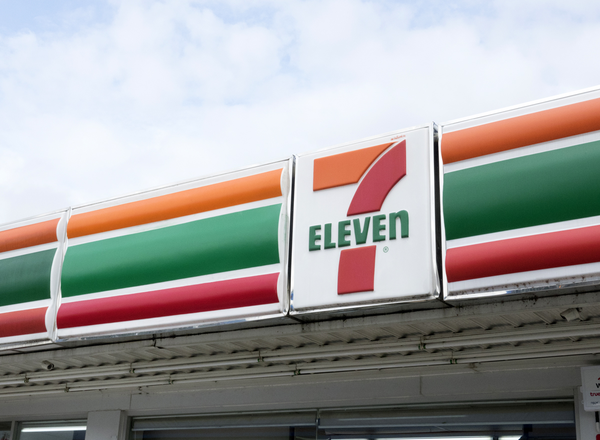What is a Multi-Domestic Strategy? Definition and Relevant Examples
What is a multi-domestic strategy?
A multi-domestic strategy is a complementary concept to a global standardization and expansion strategy. Its main focus is to boost the visibility of a brand’s subsidiaries as independent competitors in target areas, keeping the momentum of a global strategy for expansion as effective as possible.
This is often used by multinational businesses attempting to breach the international business barrier, looking for a distinct competitive advantage that can give them a leg-up on their competitors. The secret? Greater local responsiveness to stimuli or inputs.
Below, we’ll explore the benefits brands can get from using a multi-domestic strategy in international markets, and seven key examples of multi-domestic or transitional strategy elements seen from competitive global brands — such as Frito-Lay, Nestle, and more.
Why Multi-domestic Strategies are Beneficial
There are three key benefits that multinational companies can get from using a multi-domestic strategy. These include:
- Increased local brand awareness. Different markets may or may not be aware of a brand’s offering or core values, especially in different regions or more rural areas. Brand awareness is often a helpful (and undersung) element of a well-rounded marketing strategy that can make your efforts more impactful.
- Better brand understanding of the target market’s local culture. When using a multi-domestic strategy, brands can more easily split test and determine which strategies work best in specific areas or classes of foreign markets. These results can be used to streamline global marketing costs while producing quality product in alignment with local tastes — potentially creating economies of scale in their own right.
- Greater responsiveness to local markets. A multi-domestic strategy, when done right, can display a greater degree of responsiveness to local markets in different countries. When brands take the time to try new strategies that are tailored to local preferences, customers may feel that they have personal buy-in to the brand’s decision-making process—which can result in better overall brand awareness and loyal local customers.
7 Examples of a Multi-domestic Strategy
Below, we’ve summarized a few leading examples of a successful multi-domestic approach, led by leading brands as they begin to enter new markets.

1. Johnson & Johnson
A great deal of Johnson & Johnson’s business comes from non-US countries, indicating an innovative approach to multinational expansion strategy. Most notably, the brand has sought to create an environment of accessibility and empowerment in every area of its product development strategy, This has manifested in the launch of new products (such as personal consumer goods) in critical non-US markets—such as Brazil, China, Germany, India, Singapore, Japan and the UK.
The company has traditionally focused on simultaneous expansion and standardization, much like we see with our previous case study on IKEA. This collaborative and strategically timed effort has kept a steady stream of revenue coming in, promoting further expansion and a more sustainable growth rate. They’ve continued this effort in a similar fashion across their subsidiaries in domestic markets as well, keeping them well-integrated with the local needs of their many global community members.

2. Heinz
In the example of Heinz, we see the results of a known brand focusing on customer preferences and responsivity over the comfort and stability that can come with a strong focus on standardization. While the Heinz name is largely recognized by the ketchup bottle on your local neighborhood diner, Heinz has shown its commitment to global integration — changing recipes of its most classic dips to adhere to local cultural and religious norms, creating smash-hit local product items in the process.
While this can be a significant up-front investment of time and resources to attempt to create a sustainable international business strategy, it can pay off well. Many customers have turned into lifelong brand advocates that allow Heinz to continue expanding in this fashion.

3. 7-Eleven
7-Eleven is considered a leading contender on many multi-domestic companies lists, offering one of the most inclusive transnational strategies yet. Rather than only changing its product offering or brand elements, this company has transformed its fundamental tools of doing business to adhere to local, national and international customer preferences. Examples of this include:
- Payment method acceptance: You won’t find inconvenient payment options with this chain! 7-Eleven offers customer-forward payment options at every stop. For example: Metropolitan cities and larger areas may offer touchless pay and Apple Pay, whereas rural locations are well-prepared to handle and cash out cash-only purchases.
- Product selection and range: Generally speaking, few 7-Eleven locations are alike. You can expect to see regional favorites wherever you stop, as you’d expect to see with international McDonald’s locations.
- Service selection: Depending on your area of purchase, you may be eligible for additional complimentary services — such as creating cashier’s checks, paying bills and more. These services have all been chosen based on the needs of the local audiences.

4. Frito-Lay
Frito-Lay maintains a highly competitive messaging strategy that serves as a foundational element to its multi-domestic strategy. Beyond appealing to regional consumers, the brand takes it a step further and works to appeal to different members within the sociocultural categories (such as quality-driven and value-driven buyers) with their products.
This, coupled with strategic segmentation and aggressive paid marketing, has made Frito-Lay an industry leader in consumer goods around the world. We see this also with PepsiCo, Frito-Lay’s parent company.

5. Nestle
Nestle’s approach to multi-domestic strategy involves a wide swing and high amounts of product differentiation. The product has launched several hundred successful “mini brands” using this method, using them as vehicles of analysis in their current markets of focus. These brands are launched after intensive market research has been performed, helping the brand strike the balance of convenience, consumer preference, taste and brand alignment with the overarching parent company.
This method is made even more powerful with the brand’s presence on social media, allowing them to tap right into the consumer market and conduct amateur research with little to no effort.

6. Netflix
Netflix’s consumer-first methodology is evident in two primary ways: social media interaction and localized catalogs for every offering on the platform.
The brand understands the nuances in certain shows and series may not resonate well in certain regions. While offering the consumer the opportunity to retain control (such as visiting other domains of Netflix or accessing via a VPN), the basal catalog that’s available is tailored by regional preferences and requirements, potentially boosting conversions and directly impacting brand perception.
With the launch of Netflix Original Series, we’ve seen multi-domestic forces at work here, as well — such as the commitment to cast diversity and inclusion that may make a given series more impactful to a certain location.

7. Unilever
The Harvard Business Review summarizes Unilever’s approach to multi-domestic strategy as a process of thinking globally while acting locally. While the giant has been known for its consumer-forward product lineup of tried-and-true favorites, many cite responsivity as the differentiating point of success in their current strategy.
Managers of each subsidiary remain responsive to local market changes, keeping close tabs on conversion rates, interest and engagement overall around their core product catalog. Then, stakeholders are informed and a decision is reached keeping company corporate values in mind—empowering teams to create, innovate, adapt and thrive. As the company has evolved over the course of nearly a century’s time, it’s become obvious that this model works well, so long as there’s the infrastructure to report it.
OneSky Can Localize for Your Multi-domestic Strategy
Maintaining a multi-domestic strategy is essential for sustainable growth. Translation, localization and responsivity are key elements of a successful initiative, keeping your client’s needs at the forefront of your brand offerings on a global scale. OneSky is here to support your translation management workflow, offering the expertise of thousands of master translators to communicate your content over 50+ languages. Connect with us today to try OneSky for free, and experience the difference that a centralized content management system can make.




 Written by -
Written by - 




 Written by
Written by 


